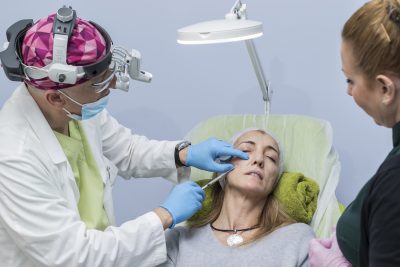When you hear Botox mentioned, you automatically think about its antiaging effects. But did you know that there are numerous medical conditions Botox can treat? Well, studies support such claims, which is why we asked our experts to share their insights on the topic. Keep reading to discover what medical conditions Botox treats!
Crossed eyes
One of the first usages of Botox was back in 1981. It was believed it could help treat people with crossed eyes. And a couple of years later, studies revealed that injecting Botox in the eye muscles diminishes the risk of developing crossed eyes.
Body odor and excessive sweating
Another interesting fact about Botox is that it can treat excessive sweating and body odor. Research reveals that injecting Botox into the armpits can help diminish the quantity of sweat produced by the body while lessening the unwanted smell.
Chronic pain
Several medical conditions can be treated with Botox, including chronic pain. Studies say that Botox is an ally for people suffering from muscle pain. This chronic condition can make one have a hard time performing daily activities. But if Botox treatments are used, a noticeable improvement in life quality can be observed.
Drooling
Neurodegenerative disorders like Parkinson’s can cause patients to lose muscle function and swallow less frequently. This results in excessive drooling in some patients. Research suggests that Botox can overcome this symptom if it’s administered into the salivary glands. Botox injections might lead to less saliva, which in turn diminishes excessive drooling significantly.
Chronic migraines
Chronic migraine is a headache that doesn’t go away for at least 14 days of a month. This condition can dramatically impact life quality and social skills, which is why medical practitioners constantly search for remedies. Recent research reveals that Botox injections can help manage chronic migraines if administered every 12 weeks. Usually, the treatment is administered in the head and neck area for immediate results.
Overactive bladder
Among the medical conditions, Botox treats we can mention overactive bladder. When the traditional treatments for this issue fail to offer any improvement, doctors recommend injecting Botox into the bladder. This will relax the bladder, which boosts the organ’s storage capacity. As a result, urinary incontinence is noticeably diminished.
Depression
A lesser-known fact about Botox injections is that it can help with depression. A small study reveals that injecting Botox in the area between the eyebrows can diminish depression symptoms in most patients.
Wrinkles
Of course, one of the most popular usages of Botox nowadays is as an antiaging product. It can smoothen the face, diminishing the appearance of fine lines and wrinkles. Keep in mind that for the best results, you should follow medical advice at all times.
The bottom line
These are some of the medical conditions Botox treats. Of course, it remains the go-to solution for premature aging. But no matter why you’re considering Botox injections, you should discuss your needs with a trained professional. He will suggest the best approach depending on your body’s needs!

